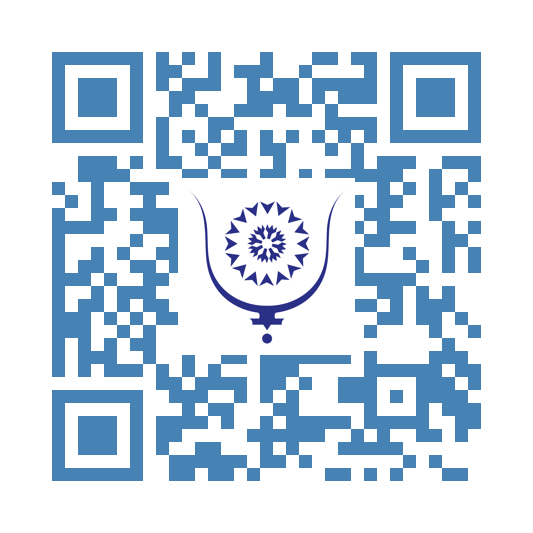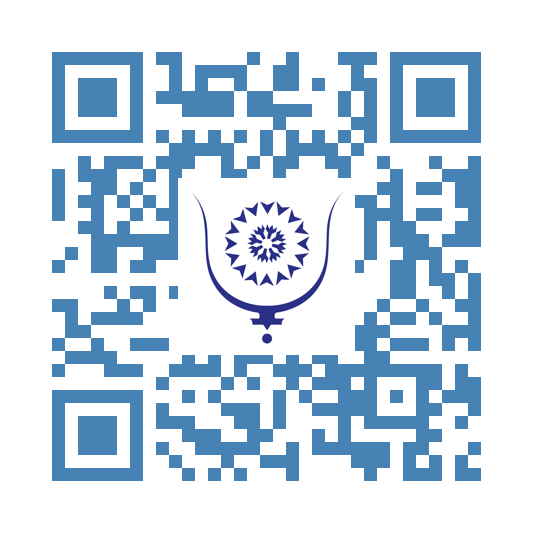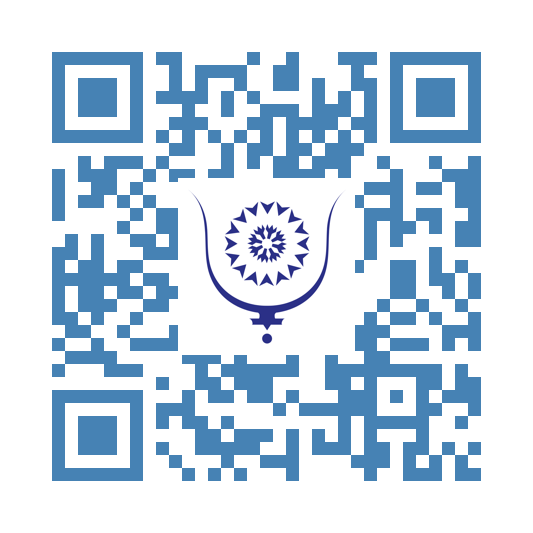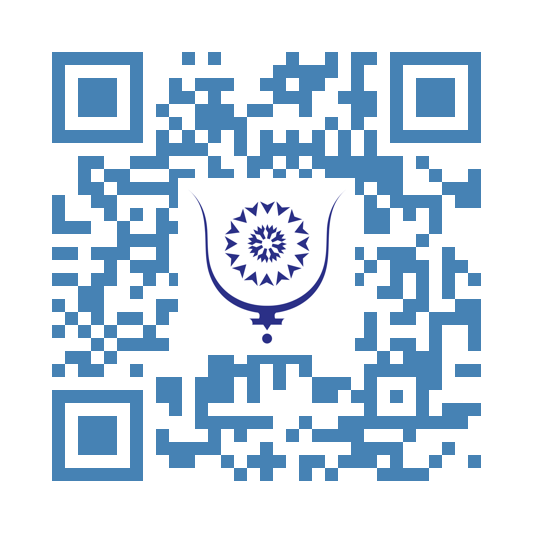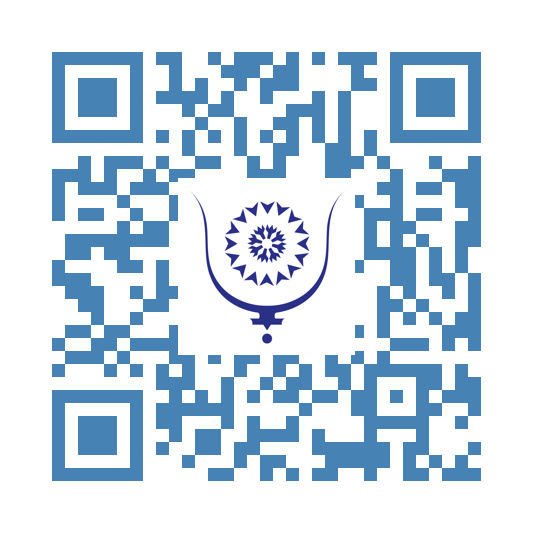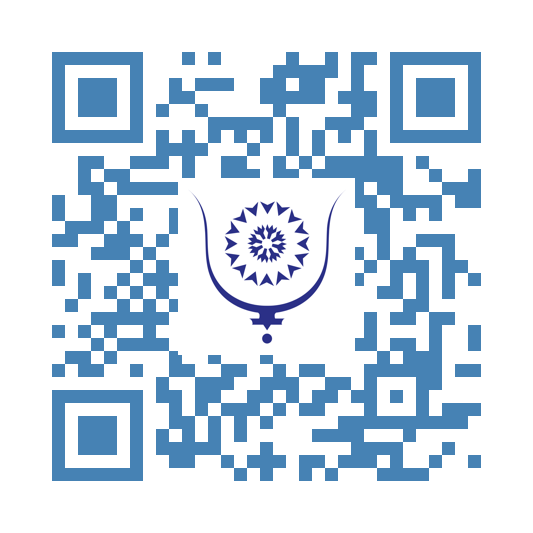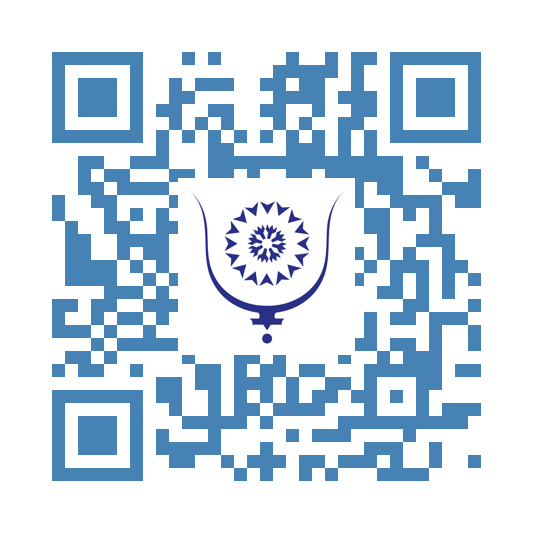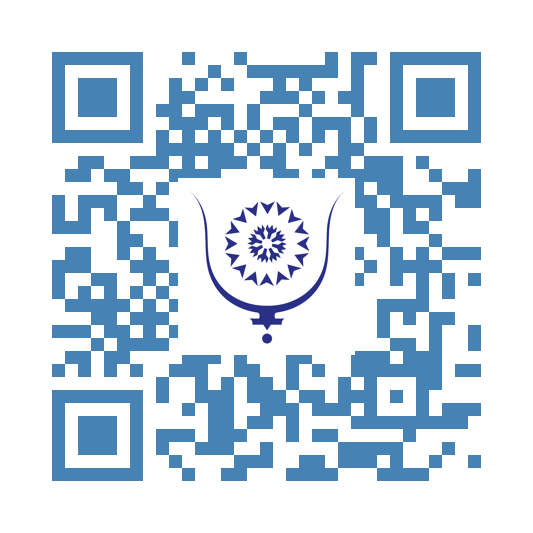Collective Intelligence: ''Alone You May Begin, But Together You Go Far''
389
**We often hear the saying, ''One hand alone cannot clap'', you need another hand to create sound.** This perfectly reflects the reality of working on a project in life. Working alone can take you somewhere, but rarely very far.
Collective intelligence is essential for building creative projects with the potential to truly move forward. Each team member brings a unique perspective, a different way of seeing the world, diverse skills, and individual visions. What matters most is that all these differences ultimately converge toward a shared goal.
To sustain the rhythm of collaborative work, listening is key. Communication forms the backbone of human relationships. When listening breaks down, so does communication, and without it, teamwork cannot thrive.
Just as every boat has its captain, every team needs a leader, the person everyone turns to, both in moments of crisis and in times of celebration. The leader is the foundation of the team. And if that foundation is weak, the whole structure risks falling apart.
It’s equally important that each team member understands their strengths and limitations, allowing room for others to step up and contribute. Collective intelligence achieves its full potential when the team moves as a harmonious orchestra, each member in sync, playing their part in perfect balance, working together to create something greater than any one individual could achieve alone.
Share:
Collective Intelligence: ''Alone You May Begin, But Together You Go Far''
copy:
https://bluwr.com/p/155262429
Questions About Food Security !
2100
**Food security is defined as a state in which all people, at all times, have physical and economic access to sufficient, safe, and nutritious food that meets their dietary needs and preferences for an active and healthy life. ** This widely recognized definition, first introduced at the 1996 World Food Summit in Rome and later refined in 2001, highlights four essential pillars: availability, accessibility, utilization, and stability. It emphasizes not only the quantity of food but also its quality—both are critical for supporting health and overall well-being.
While this definition presents an ideal vision, the global reality is far more complicated. **Is food security still a challenge in the world today?** Unfortunately, the answer is yes. Millions of people continue to struggle with hunger and inadequate access to nutritious food.
According to the 2023 State of Food Security and Nutrition in the World (SOFI) report, 733 million people faced hunger in 2023—one in five of them in Africa. Alarmingly, global hunger levels have shown little improvement over the past three years. Compared to 2019, an additional 152 million people are now undernourished, marking a significant setback. In fact, the report notes that current hunger levels resemble those last seen in 2008–2009, effectively erasing 15 years of progress. If current trends continue, 582 million people are projected to remain chronically undernourished by 2030, with half of them in Africa, putting the Zero Hunger goal at serious risk.
Despite these challenges, considerable efforts have been made to improve food security. In 2022, the World Food Programme (WFP) provided food assistance to over 150 million people across more than 120 countries. The Global Agriculture and Food Security Program (GAFSP) has invested over $2 billion to support smallholder farmers in low-income countries. Initiatives like the FAO’s Hand-in-Hand also focus on addressing hunger and poverty hotspots by promoting agricultural development.
This brings us to a key question: **Why does food insecurity persist despite global interventions?**
The main challenges of achieving global food security that we often hear about include: conflict and political instability, which disrupt food production, transportation, and markets; climate change and natural disasters, which damage crops, reduce yields, and threaten food supply chains; poor infrastructure and weak supply systems, especially in rural or remote areas, which hinder effective food distribution; and economic shocks and global market disruptions, such as those triggered by the COVID-19 pandemic or the war, which drive up food prices and reduce availability for millions of people.
When we look at the current state of global food security, we are left with critical questions: **Where are the gaps that prevent global food security from being achieved? Are they in the efforts used to address food insecurity? In our understanding of the challenges surrounding food security? Or in the way we define global food security itself?**
Food security is often associated with the concept of "Zero Hunger," but the two are not synonymous, nor is one simply a subset of the other. Achieving food security means achieving Zero Hunger, but the reverse is not necessarily true. It is possible to provide enough food to prevent hunger and allow someone to survive, yet this does not equate to fully achieving food security. Food security goes beyond merely ensuring that people are not hungry. It involves providing access to a balanced and nutritious diet that meets both the quantity and quality of food needed to support a healthy life. True food security means individuals not only have enough food to avoid hunger, but also the proper nourishment to maintain health and well-being in the long term.
**But what exactly does "food" mean in the context of food security?** In other words, what are the essential elements of food that must be sufficient in both quantity and quality to promote good health? We understand that food can be broadly divided into two main categories: cultivated food, which includes grains, vegetables, fruits, and legumes, and animal-based food, which includes meat, dairy, and eggs. In terms of price, animal-based foods are typically more expensive than cultivated foods due to the costs associated with raising animals, including feed, land, and labor. This price disparity can create barriers to access, particularly in low-income communities where people may prioritize quantity over quality. However, both categories are essential for a balanced diet. Cultivated foods provide important carbohydrates, fiber, and micronutrients, while animal-based foods offer high-quality proteins and essential fats, as well as key vitamins and minerals like vitamin B12 and iron.
Achieving food security requires access to both types of food. In other words, the challenge lies in identifying an optimal strategy for selecting key elements from both categories and focusing efforts on ensuring their availability. Rather than dispersing resources across a broad range of foods within the same category or with similar nutritional value, we should first prioritize the most essential nutrients and food types. Then, efforts should be concentrated on making these critical foods accessible, affordable, and sustainable for all populations with reasonable prices. This targeted approach can help bridge the gaps in food security, ensuring that people not only have enough food but also the right kind of food to promote long-term health.
Many of us may perceive food as a trivial part of daily life, something we take for granted. However, when a crisis strikes—such as during pandemics or wars—people quickly rush to secure food, highlighting its fundamental role in survival and stability. This behavior underscores how essential food is, not only for day-to-day living but also for maintaining societal resilience during times of uncertainty.
Share:
Questions About Food Security !
copy:
https://bluwr.com/p/142664855
A Childhood Faded Too Soon
3896
**Wreckage and ruin stretch endlessly. All is gray—everything blends into the color of sorrow and fear. Barefoot, she runs toward her shattered home, her eyes searching, her voice pleading, "Buppy! Buppy!" **
A gentle voice calls from behind, "Come back. It's dangerous here."
"I'm looking for my dog, Buppy," she responds softly. "It was the last gift from my mother before she died."
He looks at her, his expression weighed down by grief. "Buppy went to join your mom in a beautiful place—a place far better than this."
She understands, her gaze lowering. Yet, she walks forward, her heart heavy but her steps steady.
Not far away, a small girl stretches her fingers toward a key dangling from a broken door. A boy watches her curiously.
"What are you doing?" he asks.
"I want to keep the key," she whispers. "As a memory of our home. Can you help me reach it?"
He hesitates, swallowing the tears that burn his eyes, then takes the key and places it in her open hand. She nods gratefully and walks away, never looking back.
Nearby, a brother and sister play barefoot in the dust. Their laughter is edged with sadness, their smiles heavy with unspoken burdens. The boy's face looks pale and chilled.
"Aren't you cold?" someone asks. "Where's your jacket?"
"I have one," he replies.
"Then why aren't you wearing it?"
"I gave it to my sister," he answers simply.
"Why?"
"Because I'm a man," he says quietly. "And she needs it more."
A pause lingers before the next question. "What do you want to be when you grow up?"
"A doctor," he says, his voice wavering. "But... but..." The weight of that unfinished thought hangs in the air—his eyes speak the impossibility he cannot voice.
*They are children by age, yet their eyes and words reveal a reality far beyond their years. They have grown up too soon, their innocence taken by a world they did not choose.*
Share:
A Childhood Faded Too Soon
copy:
https://bluwr.com/p/130920246
The Billion-Dollar Question: How Much Is Your Data Worth in the Age of AI? Shapley Value in Data Economics
6024
In today’s AI-driven world, data is often compared to oil. However, not all data holds the same intrinsic value. While some datasets are critical for the performance of AI models, others contribute little or no enhancement. As organizations pour vast resources into acquiring, processing, and leveraging data, the ability to systematically assess its worth has become a fundamental challenge.
**The Need for Intelligent Data Valuation**
When companies acquire data, it’s not enough to simply consider its quantity. They must also evaluate its quality, uniqueness, and relevance to the problem at hand. Equally important is understanding the relationships between datasets—whether they complement each other or act as substitutes. This distinction plays a pivotal role in making cost-effective decisions.
For example, a bank seeking to improve its fraud detection capabilities might consider purchasing two datasets:
*-* **Transaction History (Dataset A): ** Records of past financial transactions, which may reveal patterns indicative of fraud.
*- ***User Behavior Data (Dataset B): ** Behavioral analytics, such as login habits and spending behaviors, which can help identify anomalies.
If combining both datasets leads to a significant improvement in fraud detection accuracy, they are considered complementary—together, they provide more value than the sum of their individual contributions. However, if one dataset alone offers nearly the same predictive power as the other, the second dataset becomes a substitute, diminishing its marginal value.
This distinction is crucial. Companies can waste millions on redundant or low-value data if they fail to evaluate dataset interactions properly. A deeper understanding of these relationships helps ensure that only the most valuable data is acquired, processed, and used to drive AI-driven decision-making.
**Assessing the True Economic Worth of Data with Shapley Value**
To address this challenge, the **Shapley value**—a concept rooted in cooperative game theory—provides a fair and consistent method to assign value to datasets based on their contributions to the overall performance of an AI model. In this context, the "game" refers to model performance, and the "players" are the datasets used to train it. The Shapley value acts as a metric to evaluate the contribution of each dataset to the model’s performance.
**General Concept of the Shapley Value**
The Shapley value distributes the total "payoff" (or performance improvement) of a cooperative game (i.e., model accuracy) among the "players" (datasets) according to their marginal contributions. To calculate the Shapley value for a dataset, we consider all possible combinations of datasets and evaluate how much the addition of that particular dataset enhances the model’s performance.
Let’s consider an example: Fraud Detection System: Imagine a fraud detection system with three datasets:
*-* Transaction history (Dataset A)
*-* User behavior data (Dataset B)
*-* Geolocation data (Dataset C)
To calculate the Shapley value, we would:
1. Evaluate the model’s performance with each dataset, both individually and in combinations
2. Determine the marginal contribution of each dataset by seeing how much it improves the model’s performance when added to the other datasets.
3. Calculate the average contribution of each dataset across all possible combinations.
The Shapley value ensures that each dataset is credited according to its true contribution to enhancing the fraud detection system. This methodology evaluates the worth of data not only based on its individual impact but also by considering how it interacts with the other datasets.
Share:
The Billion-Dollar Question: How Much Is Your Data Worth in the Age of AI? Shapley Value in Data Economics
copy:
https://bluwr.com/p/101307537
Newborn
6507
**A long season had passed over the people of Nighthaven, cold and dark. Each day, they waited for the sun to rise from the great mountain, hoping it would pierce the gloom and lift their spirits. ** Season after season, they made the pilgrimage to the mountain, longing for the moment when the sun would shine again. They yearned for the light that would illuminate their sky, warm their homes, nourish their land, and bring life to every corner of their kingdom.
One day, they were awakened by a deep, resonant sound. At first, they couldn’t place its source—it sounded like a glass cup dropped into solid water. Gradually, the sound grew louder, echoing from the direction of the mountain. It was a scream, and they wondered if it might be the cry of a person. As they drew closer, the scream softened, becoming more innocent, more childlike. Their eyes widened in astonishment, and they whispered, *"It’s a newborn."*
Suddenly, the sun began to rise from the mountain where the newborn was. She began to laugh, and the warmth of the sun spread across Nighthaven, filling every corner. The flowers bloomed, and the birds soared from their nests, filling the sky with life.
And they said,* "Our sky has found its sun!"*
Share:
Newborn
copy:
https://bluwr.com/p/75473900
Stories
1753
The beginning is always hard; patience is key, and with time, things tend to improve—just as wise people often remind us when we're starting a story. At first, you may not know where to begin or what your starting point is, so you search for it. Once you find it, you can begin writing your story—whether it's your first, second, third, or even your millionth. You might know where your story begins, but the number of stories we live through is unknown. The person who enters a story is not the same person who exits to begin the next.
Living a long story behind may be difficult, but you remain part of many stories. You might notice some stories repeating, others mirroring the experiences of people around you, and at times, you may even smile because you can guess how they’ll end, having seen them unfold before. There are moments when you feel like the conductor of all these stories, but at other times, it seems like you're simply living within them, forgetting your own.
Living short stories is like reliving life over and over again. Each time, you’re eager to finish one and begin another, feeling the thrill of starting something new. But along the way, you may either lose yourself or grow, depending on how each story ends. We are all the heroes of our own stories—some converge, while others diverge. People become part of your story, just as you are part of theirs.
Choose peace, love yourself, and keep smiling. The most beautiful story of all is having life and meeting others to write stories together.
Share:
Stories
copy:
https://bluwr.com/p/39128540
Underwater
1607
He dreams of it but has never seen its face. He wonders what it would be like to be close to it, to bask in its warmth and light. As he drifts in the middle of the ocean, he hopes to catch a glimpse or hear a sound. While floating on the water, a beautiful voice emanates from below. He dives beneath the surface and discovers a myriad of enchanting faces, each adorned with a captivating smile. Everything seems wonderful, but he feels out of place. The empty cup begins to fill, masks start to fall, beautiful faces disappear, and darkness appears. Unable to hold his breath underwater, the path becomes unclear. The rhythmic pulsing he hears compels him to the surface, where he finds a beautiful heart waiting for him.
Share:
Underwater
copy:
https://bluwr.com/p/27178766
Three People Who Should Be in Your Professional Life
1626
In your professional life, there are many people you can meet daily in your work environment. You should find three types of people among them.
**The Exemplar: **This person represents a model you can follow to achieve your goals. He is a source of inspiration and creativity. Observing and learning from an Exemplar can significantly enhance your professional growth and development.
**The Encourager:** This person represents a source of energy that pushes you out of your comfort zone and encourages you to thinkoutside the box, take risks, and explore new opportunities.
**The Learner:** This person represents a source of pleasure and happiness. Sharing your knowledge with a Learner helps you to love yourself and what you do more. Their eagerness to learn can reignite your passion for your work and provide a sense of fulfillment.
Share:
Three People Who Should Be in Your Professional Life
copy:
https://bluwr.com/p/21273279
White Sheet
3760
He gave her a white sheet. She asked him, "What do you want me to do with it?" He replied, "Start by making your first drawing." She told him, "I don't know how." He asked her to choose from the color pens. She picked one that she liked very much and started to make the first line on the white sheet, then the second line, and the third line. She asked him for more colors. He gave her two more colors, and she was very happy because her white sheet was turning into a beautiful drawing. She asked him for even more colors. He told her, "You might not be able to manage all these colors, and it could end up ruining your beautiful drawing." She reassured him, "Don't worry, it will be a very beautiful drawing." He gave her more colors, and she started to add one color after another. The white sheet became filled with many colors.
Eventually, the white sheet became chaotic with all the colors. She paused, looking at her drawing, and felt that it had lost its meaning with so many colors. She felt like she had made a mistake on her white sheet. She asked him for another white sheet. He told her, "You can't have another white sheet; only one is given to you. But I can give you this brush to erase some of the colors from your drawing." She started to erase some of the colors, but they didn't come off completely and left traces on the white sheet. He told her, "When you move forward, it is usually hard to go back. You should move forward and find the white in your sheet again.
Share:
White Sheet
copy:
https://bluwr.com/p/15627670
She
1662
I see her in every part of my life. I can't forget her; she accompanies me in every step. I remember her bright eyes and her big smile. I recall her small dreams and the hopes she said every night before falling asleep. I remember how she looked; the world resembled her greatly. I remember her small friends and their names. I remember the first time she felt scared and shed her first naive tears. I remember her failures and her joy for her first success. I remember the first time she said no and moved forward without looking back. Every year, as I read her letters, I see her hope to remain within me for all my life. She was the most beautiful part of my life for a quarter of a century, and she will remain so forever.
Share:
She
copy:
https://bluwr.com/p/14733646
Wake up
1685
Close your eyes and endeavor to recall the first instance when you became self-aware, the initial moment you truly opened your eyes and observed the world around you. Can you locate this image within your memories? Is it vivid, or perhaps elusive? If you haven't found it, fret not, for it's often said that every story in existence has a beginning. Thus, you can believe that the genesis of your narrative exists, even if it's shrouded in the mists of forgetfulness. "Belief" can expedite the journey towards answers to myriad questions in your mind. However, "awareness" can lead you along alternative, albeit potentially longer, paths to deeper understanding. Are you inclined towards belief or awareness?
Now, open your eyes. What do you see before you? Can you touch, hear, or even smell it? How do you know of its existence? Do you rely on belief in your senses? If so, where does your awareness fit into this? Do you think belief precedes awareness? Do you think your story begins with believing in what you perceive?
**************************************************
*Close your eyes again and try to remember the best moment of your life so far. Do you find it? Can you see your smile? Can you feel your happiness again in this best moment? Keep your eyes closed and just focus, you can do it if you want. But did you ask yourself if you are happy now or not? Are you good? Be honest with yourself, you should know what happens inside you. There is a soul inside you. Did you ever ask your soul if it is good or not? You can be happy but your soul isn't, so you just claim happiness. Happiness is not just smiling and laughing is a deeper feeling that your soul is good.
I won't prompt you to open and close your eyes again to revisit the sad moments in your life. Do you know why? Because these memories should be expunged from your mind if you seek to nurture a wholesome soul and genuine happiness. Happiness is a choice, not a happenstance occurrence. Remember, you have the power to choose happiness. It hinges on how you perceive the events in your story. Focus on the filled portion of your glass, not the empty part, to uphold a good soul.
**************************************************
Just as every story boasts a beginning and middle, it inevitably culminates in an end. Have you ever pondered this inevitability? How do you envision the final chapter of your tale? Do you anticipate a denouement suffused with joy or tinged with sorrow? Do you expect to walk the final steps alone, or surrounded by companions? Are you apprehensive about your end? Be honest with yourself; you cannot control all the elements of your story. If you struggle to discern the beginning and end of your tale, it suggests that you're not the master of your narrative; rather, you are merely a character in a dream that will conclude when you hear "Wake up" from your master.
Share:
Wake up
copy:
https://bluwr.com/p/10216033
Awaiting You
1997
Royal Gambit is an annual event organized by the Cogitaria realm to select its new king. The game involves a chess match between two participants: the candidate and the reigning king. The coveted prize is a tiger mask crown, symbolizing royal authority. The victor ascends to the throne as the new king, while the defeated succumbs to their demise.
For over decades, the throne of Cogitaria has remained unchallenged, as fear of the perilous stakes in the Royal Gambit game dissuades potential contenders. Each year, the reigning king eagerly awaits a challenger, yet no brave soul steps forward to partake in the high-stakes game, leaving the kingdom in a prolonged state of suspense.
However, amidst this prolonged era of unchallenged rule, an exception emerged during one of the annual Cogitaria festivals dedicated to selecting the new king through the Royal Gambit. A stranger, passing through the realm, caught wind of the festivities that had lingered for more than a week, awaiting a candidate brave enough to face the reigning monarch. Intrigued by the mysterious allure of the event, the stranger decided to step into the fray.
As the chessboard opened after decades of dormancy, each piece took its rightful place, setting the stage for the Royal Gambit to commence. The chess pieces clicked and clacked, echoing the strategic dance that would ultimately decide the kingdom's destiny. With a masterful stroke, the stranger executed a climactic checkmate, the chess pieces freezing in place as the kingdom held its breath. Victory was claimed, and the once-elusive tiger mask crown now adorned the head of the triumphant stranger.
*“Every narrative in life has its genesis and conclusion. Time is the only constant, and no one is immortal within their kingdom. The realm awaits the stranger's next move, recognizing that even in victory, the cycle of change and challenge remains an inevitable force.”*
Inspired by this image :
Share:
Awaiting You
copy:
https://bluwr.com/p/6607101
Don't Extinguish my Flame
2332
*Authors : Tima EL & Khalil Z.*
**In the enchanted realm of Celestria, where every soul possesses a mystical flame known as "Eclipsis," the sky dances with the collective radiance of its people. Amidst this luminous symphony, a shadowy force emerges—a darkness that hungers to shroud the brilliance of these magical flames.**
Enter the Shadowvores, inhabitants of Celestria who are denied the embrace of Eclipsis. Instead, they bear formidable and robust bodies, enhancing their strength by absorbing and extinguishing the radiant Eclipsis flames of others. They embody the antithesis of Celestria, disrupting the delicate balance upheld by the natural ebb and flow of magical flames. With each extinguished Eclipsis flame, the once-vibrant light of Celestria wanes.
At the heart of Celestria lies the Arcane Ember, the source of all Eclipsis flames. The people of Celestria engage in an eternal struggle against the Shadowvores, who crave this magical ember, bestowing absolute power upon its possessor. One fateful day, the Shadowweavers decide to launch a collective assault on the Celestrians, intent on seizing the Arcane Ember—the fount of unparalleled power. The consequence is grave: all the valiant inhabitants of Celestria succumb to the relentless onslaught.
Remaining alone in Celestria, the Shadowvores start to vie for the coveted Arcane Ember. One Shadowweaver, thirsting for power driven by an insatiable hunger, stands before the radiant artifact, proclaiming,* "This is the flame I've been waiting for a long time."* The mystical ember responds with ancient wisdom, saying,* "And I, too, have awaited your presence for a long time."* Perplexed, the Shadowvore questions,* "You've been waiting for me?"*
The Arcane Ember imparts a timeless truth,* "With every day's end, the night descends, and in the darkness, a promise lingers — after every night's embrace, the day invariably returns."* Determined to cast Celestria into eternal darkness, the Shadowvore retorts,* "The night in Celestria will never dawn."* In a plea to preserve its luminance, the Arcane Ember urges,* "Don't extinguish my flame."*
Undeterred, the Shadowvore declares, *"You are the last beacon of light in my darkness. My strength won't reach its zenith if I don't extinguish you."*
The Arcane Ember, embodying the essence of duality, counters, *" Do you think your strength will have meaning after extinguishing me?"*
Undeterred by the wisdom offered, the Shadowvore remains steadfast in their resolve. *"I care not for the meaning of strength. I crave power, dominance, and the eternal night that shall reign over Celestria,"* they declare with an ominous intensity.
The Arcane Ember's voice resonates with a potent echo,* "In your pursuit of power, you risk losing the very foundation of existence. Celestria thrives on the delicate dance between opposites. Darkness needs light, just as strength needs meaning. Without balance, your power becomes an empty void. Let the day dawn again."*
A profound silence envelops the realm of Celestria as the clash between light and darkness reaches its zenith, echoing through the magical tapestry of this enchanted world....
Note : "The link below contains the image that is the source of inspiration for writing this short story :) "
Share:
Don't Extinguish my Flame
copy:
https://bluwr.com/p/3933007
Four keys to create supervised learning model
2121
Supervised learning is a strategy in machine learning that enables a model to learn from data without being explicitly programmed. In other words, in supervised learning, the model tries to find the relationship between the "input" X and the "output" Y. Therefore, the first key to creating a supervised learning model is the dataset.
**Key 1 : Dataset**
Having a labeled dataset is essential, including two important types of information: the target variable Y, which is what we want to predict, and the explanatory variable X, which are the factors that help us make predictions. Let's take an example: imagine we want our model to predict the weather (Y) based on factors like temperature, humidity, and wind speed (X). To do this, we gather a dataset with information from the past, where we already know both the weather outcomes (Y) and the corresponding factors (X). This dataset acts like a box of puzzle pieces. Each piece represents one of the factors, and finding the relationship between these pieces defines the weather.
We can represent this relationship as a mathematical equation, like this: Y = F(X), where F represents our model. Therefore, the second key is the Model.
**Key 2: Model**
The fundamental model in supervised machine learning is a linear model expressed as y = ax + b. However, the real world often presents nonlinear problems. In such cases, we explore non-linear models, such as a polynomial of degree two like y = ax² + bx + c, or even of degree three, and beyond. It's crucial to understand that each model has parameters requiring adjustment during training. Consequently, the two remaining critical components are the cost function and the optimization algorithm.
**Key 3 : Cost Function**
In machine learning, a cost function, also called a loss or objective function, quantifies the gap between the target and predicted values, signifying the model's error. The aim is to minimize this error to craft the most effective model.
**Key 4 : Optimizer**
Optimizer forms the core of a machine learning model, representing the strategy to discover parameter values that minimize the cost function. It plays a crucial role in fine-tuning the model for optimal performance.
Share:
Four keys to create supervised learning model
copy:
https://bluwr.com/p/2463165


